Tigers and Zebras 05 − Safety Stripes in the Alps [Column_Schemes & Paints]
Here are some safety stripes found in Switzerland.
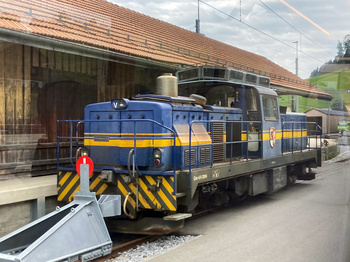 : Jul. 7, 2023 Zweisimmen, Switzerland
: Jul. 7, 2023 Zweisimmen, Switzerland
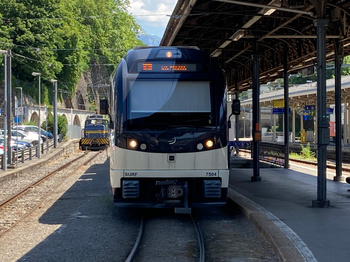 : Jul. 8, 2023 Vevey, Switzerland
: Jul. 8, 2023 Vevey, Switzerland
The top photo shows the meter-gauge Montreux Oberland Bernois Railway (MOB) diesel locomotive, and the next photo shows Transports Montreux Vevey Riviera (MVR) diesel locomotive both with chevrons on aprons.
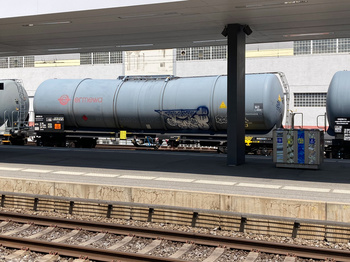 : Jul. 10, 2023 Visp, Switzerland
: Jul. 10, 2023 Visp, Switzerland
A little safety stripe is found on a passing freight train. This tank car with a safety stripe on the end of the bolster is ERSA Zacns 7841-102 (reporting mark, class, series-number) owned by the freight car rental company Ermewa.
These are the only tigers and zebras I found in Switzerland during our ten days holidays.
 : Jul. 7, 2023 Zweisimmen, Switzerland
: Jul. 7, 2023 Zweisimmen, Switzerland : Jul. 8, 2023 Vevey, Switzerland
: Jul. 8, 2023 Vevey, SwitzerlandThe top photo shows the meter-gauge Montreux Oberland Bernois Railway (MOB) diesel locomotive, and the next photo shows Transports Montreux Vevey Riviera (MVR) diesel locomotive both with chevrons on aprons.
 : Jul. 10, 2023 Visp, Switzerland
: Jul. 10, 2023 Visp, SwitzerlandA little safety stripe is found on a passing freight train. This tank car with a safety stripe on the end of the bolster is ERSA Zacns 7841-102 (reporting mark, class, series-number) owned by the freight car rental company Ermewa.
These are the only tigers and zebras I found in Switzerland during our ten days holidays.
2023-12-01 09:00
コメント(0)
Surfaces - Everyday Life in the Early 70s [Column_Photo Archives]
I bring you a trip down memory lane with scanned images of my dad's 70's slides. The 1964 Oldsmobile was our vehicle of choice for family adventures from Fairbanks to Oaxaca. We never flew, thus I named this series "Surfaces".
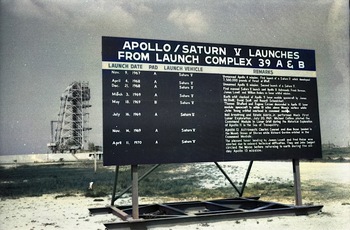 : Cape Canaveral, FL. winter, 1970
: Cape Canaveral, FL. winter, 1970
Apollo 13
 : Cape Canaveral, FL. winter, 1970
: Cape Canaveral, FL. winter, 1970Apollo 13
2023-11-17 09:00
コメント(0)
Cisco at a Glance by the 16th Census [Column_Cisco Range]
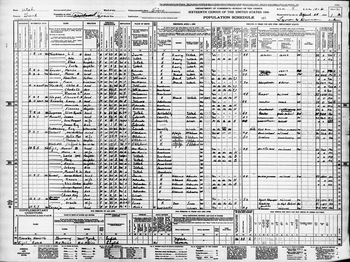 : first sheet of 1940 Census
: first sheet of 1940 CensusThe US Censuses are disclosed 72 years after they are taken. The 16th Census was released in 2012.
As for Cisco, it was enumerated by later county attorney Lyman Elvin Duncan (1913−1999) between April 28 and 30, 1940. It lists 248 persons in 49+1 dwellings, including temporal 109 persons in 12 dwellings of railroad section gang (+1 means a family is enumerated without the “number of Household in order of visitation”).
Northernmost of the Enumeration District (E.D. 10-6) at the foot of Book Mountains/Cliffs reside several rancher families.
Rancher Ole Leo Johnson (1905−1944), his wife, his two sons, and his three daughters reside in a rented home, rancher Clarence Edwin Greer (1902−1967), his wife, his four daughters, and his two sons reside in a rented home, rancher Byron Theodore Smith (1904−1989), his wife, and a lodger reside in a rented home, and rancher Albert James Turner (1886−1946), his three sons, and his daughter reside in his own home, all located at in the area.
Easternmost of the E.D. along the Colorado River and the Denver & Rio Grande Western Railroad locates the community of Westwater. Several rancher families and railroad worker families reside in the area.
Rancher Alton E. Tomlinson (1906−1969), his wife, and his son reside in his own home, mechanic Leland Edward Francis (1904−1969) and his wife reside in a rented home, sheepherder Emmett Elizondo (1897−1992), his wife, and his son reside in his own home, merchant John Coleman Hardison (1874−1943) and his wife Killy who was the postmistress of Westwater Post Office reside in a rented home, ranch-hand Bernard Etcheverry (1895−1962), his wife, his two daughters, and his son reside in a rented home, ranch-hand Jay Edmund Belding (1904
−1989), his wife, his three daughters reside in a rented home, and ranch manager Pierre Pete Etcheverry (1893−1979), his wife, his son, and two lodgers reside in a rented home, all located at along the river probably from the upstream to downstream in order.
Railroad section foreman Pedro Perez (1896−?) and his wife occupy the section house, section hand Benny Alered Titus (1906−1990), his wife, and his son reside in his own home, section hand Manuel R. Valenzuela (1913−?), his wife, and his son reside in a rented home, and section hand Leonard Salatino (1883−1957) resides in a rented home located at in the area.
Denver & Rio Grande Western Railroad was relocating and extending the Cottonwood siding located at the west of Westwater in 1940[1]. 109 persons in 12 dwellings − probably outfit sleepers − of railroad section gang enumerated in the Census seems to set out for the work.
At the east of Cisco townsite along the Colorado River aka Cisco Landing reside several rancher families and a pumper family.
Rancher Louis James Christensen (1898−1957), his wife, and his two daughters reside in a rented home, rancher Marion Frederick Gruver (1888−1947) resides in a rented home, rancher Mason A. Greer (1899−1980) and his father reside in a rented home, and a sheepherder, Chole A. Martin Hallett (1858−1940), and her two pumper sons reside in her own home, and rancher Emery Knowles (1870−1952), his wife, and his daughter reside in his own home, all located at along the river probably from the upstream to downstream in order.
At the west of Cisco townsite along the Denver & Rio Grande Western Railroad locates Whitehouse station. Section hand Monico Aguilera (1904−1978), his wife, his two daughters, and his two sons may occupy the bunkhouse, and section foreman Frank Chiodo (1909−1992), his wife, and his daughter may occupy the section house.
Within the Cisco townsite reside several workers and their families.
Easternmost of the townsite, gas service station proprietor William Boston Capansky (1887−1951), his wife, and his son reside in his own station/home(Census Number of Household in order of visitation 14). Sirano Puyales Garcia (1884−1957), maybe the operator of the Duke's Service at that time, resides in his own home(15) next to it.
The mail carrier Ralph Dalton (1916−2002), his wife, and his son reside in a rented house(17) later became owned by John Maynard. Post mistress Henrietta “Hattie” Marie Girard Fuller (1888−1966), and her two sons reside in the “Federal Building”(20) consisted of the Post Office and the dwelling.
Behind the Post Office, Virginia Frances Paxton Gruver (1898−1978) and her two sons reside in her own boarding house(19).
Along Second Street, several residents reside in rented dwellings.
Railroad section hand Manuel D. Vigil (1881−1951), his wife, his three daughters, and his two sons reside in a rented home(10) behind Capansky's home. Opposite the Vigil's home, Cisco School teacher Elsie B. Jorgensen (1918−?) resides in a rented home(7) owned by State road foreman Victor Kirby Murray (1893−1962). He also owns the later Ruth Cafe, Cisco mercantile, and several rental dwellings at that time.
Railroad section hand Newell Arthur Taylor (1911−1967), his wife, and his daughter reside in a rented home(18) to the east of Vigil’s. Victor himself seems to reside in a rented home by the State Road Maintenance Station(21) facing the townsite with his mother. Maintenance Station truck driver Abner Edward Greer (1904−1992), his wife, his daughter, and his three sons also reside in a rented home(24) by the Station.
Along the railroad tracks facing the townsite, several facilities are occupied by the railroad workers and their families.
Agent Jeremiah Patrick Brennan (1900−1996), and his wife occupy the depot(12), and section foreman George Richard Burwell (1903−1962), his wife, his daughter, and his three sons occupy the section house(11). Compressor-man James Anton Mussatt (1913−2008), his wife, his son, and his father–in–law, section hand Walter Nelson Devault (1902−1984), his wife, his daughter, and his brother-in-law, and section hand Lebrado “Lee” Carbajal (1912−2001), his wife, his daughter, his son, and a lodger who is also a section hand occupy each bunkhouse(8, 9, 13). Section hand Elias Armigo (1912−?) and his mother, and telegrapher Arline Chonita Church (1888−1973), reside in each rented home(16, 22) within the townsite.
Accordingly, 56 persons reside in 17 dwellings at Cisco. That brings 192 persons including 109 railroad section gang to scatter around in the surrounding wilderness.
The designation of the US Highway 6 in 1937 brought several roadside businesses to Cisco in the 30s: buses began to operate between Denver and Salt Lake City, garage became service station, and hotel became motel. However, contrarily, the abolition of the Prohibition in 1933 seems to have brought some kind of decay to the “red light district” of Cisco; pool hall became cafe.
For more, the former Cisco resident Vonna Lucinda Foy Dalton (1921−2016) describes her memories of Cisco in the 40s in the 2004 magazine Vol. 51 of Canyon Legacy. The 1944 USGS aerial photo also shows how downtown Cisco was in the early 40s.
[1] Jul. 3, 1940 Daily Sentinel;
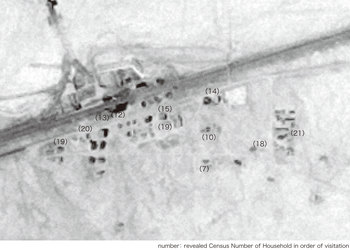 : 1944 USGS aerial photo
: 1944 USGS aerial photo2023-11-03 09:00
コメント(0)
Surfaces - Everyday Life in the Early 70s [Column_Photo Archives]
I bring you a trip down memory lane with scanned images of my dad's 70's slides. The 1964 Oldsmobile was our vehicle of choice for family adventures from Fairbanks to Oaxaca. We never flew, thus I named this series "Surfaces".
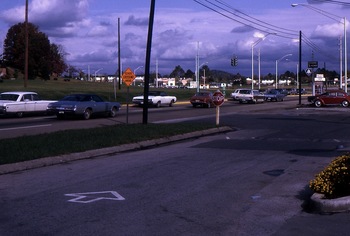 : Knoxville, TN. autumn, 1970
: Knoxville, TN. autumn, 1970
Phone Here
 : Knoxville, TN. autumn, 1970
: Knoxville, TN. autumn, 1970Phone Here
2023-10-20 09:00
コメント(0)
Cisco at a Glance by the 15th Census [Column_Cisco Range]
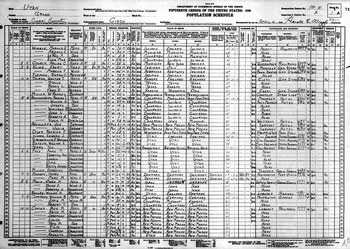 : first sheet of 1930 Census
: first sheet of 1930 CensusThe US Censuses are disclosed 72 years after they are taken. The 15th Census was released in 2002.
As for Cisco, it was enumerated by railroad agent Harold Ethelbert Wiggle (1900−1941) and town electrician Louis Elsa Cato (1889−1972) between April 4 and 26, 1930. It lists 193 persons in 45+2 dwellings (+2 caused by disorders of Census “number of dwelling house in order of visitation”).
84 persons in 24+2 dwellings including three tents are enumerated outside the Cisco townsite.
Northernmost of the Enumeration District (E.D.) 10-5, the Greater Cisco Field of gas and oil spreads in the northern half of the Cisco Desert. Several companies have been digging wells in the area since its discovery in 1923. 1930 Census enumerates several well workers in the area.
Gas well laborer Hermon E.White (1889−1963), his wife, his daughter, his six sons, and a boarder who is a miner, gas well laborer Richard Alexander Speaks (1908−1957), his wife, his three sons, and his daughter, gas well laborer Walter Raymond Oglesby (1902−1988), his wife, his three sons, and his daughter, gas well laborer Kenneth lawrence Towsley (1901−1993), his wife, and his three sons, and gas well laborer William Russell Payne (1898−1964) reside in each rented home(“number of dwelling house in order of visitation” 1, 2, 3, 7, 11). Truck driver Guy A. Miller (1889−1948), his wife, and his daughter reside in a rented home(3.5).
Within the Greater Cisco Field, farmer Hans Joseph Erickson (1874−1949) and his wife, who are one of the first settlers of Danish Flats, reside in his own home(28). Farmer Herman C. Rowe (1878−?) also resides in his own home(27) at this area.
Sheepherders and cattle stockmen are contesting over the grazing lands in the Book Mountains/Cliffs ranges north of the gas & oil field.
sheepherder Claude Raimes Blanchard (1876−1938), Rufo Eisogvirre (1900−?), and Joe Zubizarrita (1891−1978) reside in each tent(4, 5, 6), and sheepherder Frank Zabla (1895−?) reside in a rented home(10).
Turner Ranch ranch hand Eugenia Turner Jones (1868−1943), her son, her daughter, her son-in-law, and well-known black cowboy Charles Glass (1878−1937) as a boarder reside in Jone's home(9). Another Turner Ranch ranch hand Byron Theodore Smith (1904−1989) and his wife reside in a rented home(29). Ranch proprietor Albert James Turner (1886−1946) resides in his own home(26).
Easternmost of this E.D. along the Colorado River and the Denver & Rio Grande Western Railroad locates the community of Westwater. Several farmers reside there. Stockmen Ira Dominic Weimer (1895−1985), and his wife, Edgar Earnest Larsen (1907−1970), his wife, his daughter, his son, and his father, and Raymond Lester McBeth (1898−1981) and his wife reside in each home(8, 12, 13). Sheepherder Visnta Rosas (1900−?), and two boarders who are sheep camp laborers reside in a rented home(16). And farmer Awltmer Leslie Tomlinson (1880−1941), his wife, his three sons, and his six daughters reside in a rented home(14).
At the east of the Cisco townsite along the Colorado River aka Cisco Landing reside several farmer families and a pumper family. Farmer Charles Ulric Hallett (1881−1942), his brother who is a pumper, and his mother reside in a home(22A), farm laborer John W. Wadoll (1878−?) resides in a rented home(21), farmer Emery Knowles (1870−1952), his wife, his son, and his daughter, farmer Robert Lafayette Armstrong (1888−1957), his wife, and his three sons, farmer Alfred W. Morse (1859−1931), and farmer Walter Lee Wood (1872−1948), his wife, his three sons, his two daughters, and a boarder who is a farm laborer reside in each home(22, 23, 24, 25).
109 persons in 21 dwellings are enumerated within the Cisco townsite.
Easternmost of the townsite, garage(9) proprietor William Boston Capansky (1887−1951), his wife, and his son reside in his own home.
Cisco Hotel(5) manager Frances Isabelle Kruckenberg (1880−1960), her three sons, her two daughters, and her daughter-in-law, servant, servant's wife, pool hall proprietor Patrick Franklin Dyer (1861−1936), and four civil engineers reside in the hotel.
Cisco Hotel co-proprietor Sireno H. Puyales (1884−1957), cook, and two railroad section hands and a farm laborer as boarders reside in a rented home(15).
Rancher/Cisco Hotel co-proprietor John Alonzo Johnston (1881−1969), his wife, his son, and his daughter-in-law reside in a rented home(14).
Cisco Mercantile manager Ebert Kling (1878−1948), his wife, and his mother, clerk Walter Thomas Thirsk (1887−1933), his wife, his daughter, and his nephew reside in each rented home(3, 4).
Annie E. Pace (1870−1955), her four daughters, and Cisco School teacher Dorothy Miller (1908−2003) reside in Pace's home(6) probably behind the Mercantile. Annie is the wife of Pace brothers Co. co-founder John Ezra Pace (1867−1957).
Postmaster Henry Hansen (1860−1932) and his wife reside in his own home/post office(7) next to the mercantile.
Boarding house proprietor Virginia Gruver (1898−1978), her two sons, her two daughters, and a cattle laborer as a boarder reside in the boarding house(19) behind the post office.
Deputy sheriff Owen Maddox Malin (1908−1984), his wife, his daughter, and a boarder, electrician Louis Elsa Cato (1889−1972), his wife, and his two daughters, and farm laborer Herbert Elwin Johnston (1902−1994), his wife, and his daughter reside in each rented home(8, 11, 15) within Cisco townsite.
Sheep shearing plant proprietor Joseph Maria Ocamica Barainca (1893−1980), his wife, his son, two boarders who are ranch laborers, and a servant reside in Ocamica's home(16) probably located at the north of railroad tracks: the plant was located at the north of the tracks.
Hotel proprietor Pia Gandarillas (1890−?), her daughter, cook, and two boarders who are miners reside in the hotel(17) probably located north of the tracks.
Oil well laborer Frank Parker Moore (1901−1954) resides in a rented home(18) probably located north of the tracks: his late father was a coal passer.
Along the Denver & Rio Grande Western Railroad tracks facing the townsite, several facilities are occupied by the railroad workers and their families.
Railroad agent Harold Ethelbert Wiggle (1900−1941), his wife, his son, and his daughter occupy the depot(1).
Telegrapher Arline Chonita Church (1888−1973) occupies the operator’s bungalow(2).
Section foreman Jesus Rodriguez (1899−?), his wife, his son, his step-son, his two step-daughters, and two boarders who are also section hands occupy the section house(13).
Section hand Nicholas M. Chavez (1894−1974), his wife, five daughters, and his son, section hand Rafael L. Pando (1897−?), his wife, two sons, and four boarders who are also section hands occupy each bunk houses(10, 20). Section hand Manuel D. Vigil (1881−1951), his wife, his three daughters, and a boarder who is also a section hand reside in a rented home(12) behind the later Duke’s Service facilities.
Amid the Great Depression and Prohibition, Cisco boasted a population of nearly two hundred thanks to the gas well operation. The town got the gas line in 1923. The new post office was also erected in 1923. The railroad’s water supply system was renovated and the tank at the town changed from wood to steel in 1928. Cisco was still in action.
For more, historian Mike Milligan describes the history of Westwater into the 30s in the 2004 magazine Vol. 51 of Canyon Legacy. The 1937 UtahStateGS aerial photo also shows how downtown Cisco was in the 30s.
 : 1937 UtahStateGS aerial photo
: 1937 UtahStateGS aerial photo2023-10-06 09:00
コメント(0)
Surfaces - Everyday Life in the Early 70s [Column_Photo Archives]
I bring you a trip down memory lane with scanned images of my dad's 70's slides. The 1964 Oldsmobile was our vehicle of choice for family adventures from Fairbanks to Oaxaca. We never flew, thus I named this series "Surfaces".
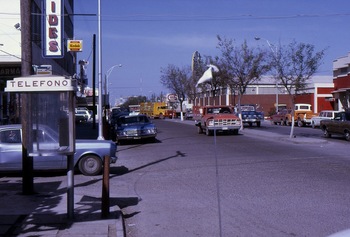 : Matamoros, Mexico. Dec. 1970
: Matamoros, Mexico. Dec. 1970
Telefono
 : Matamoros, Mexico. Dec. 1970
: Matamoros, Mexico. Dec. 1970Telefono
2023-09-22 09:00
コメント(0)



